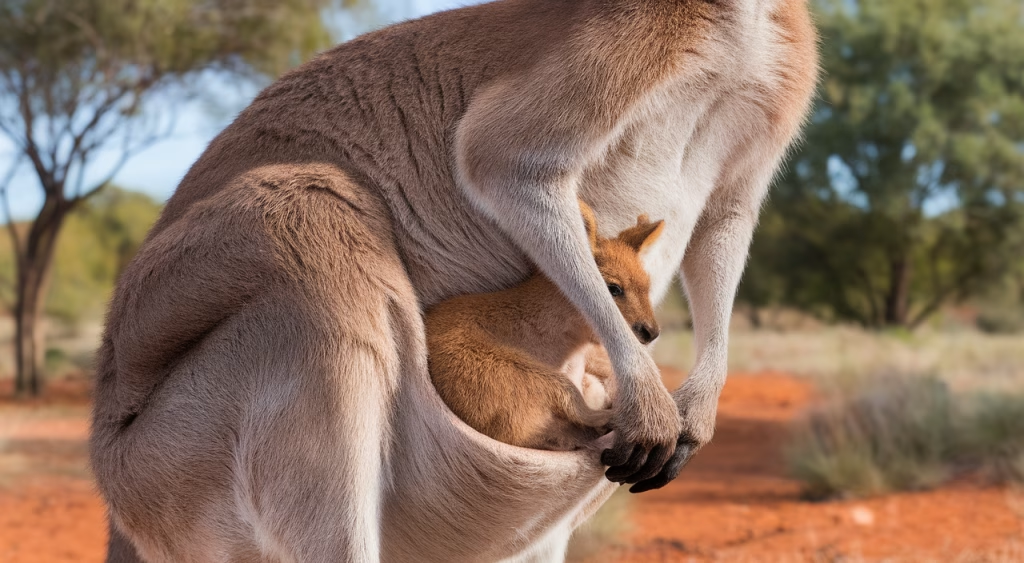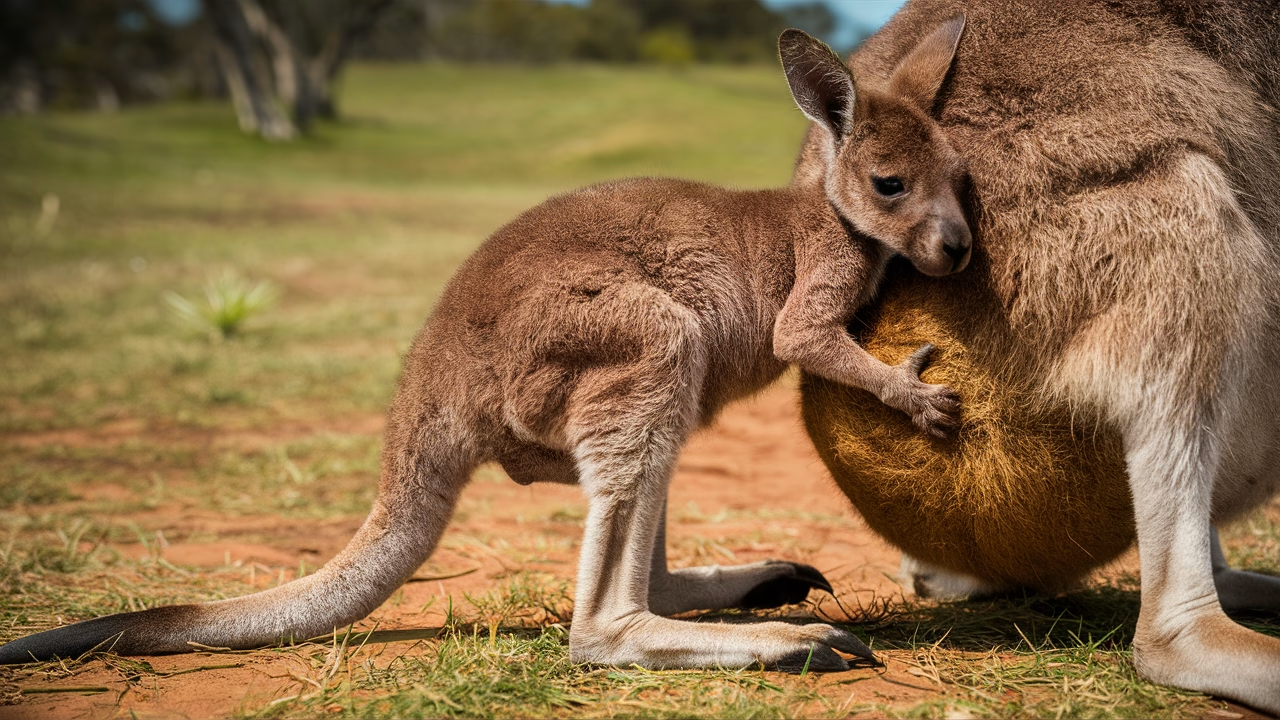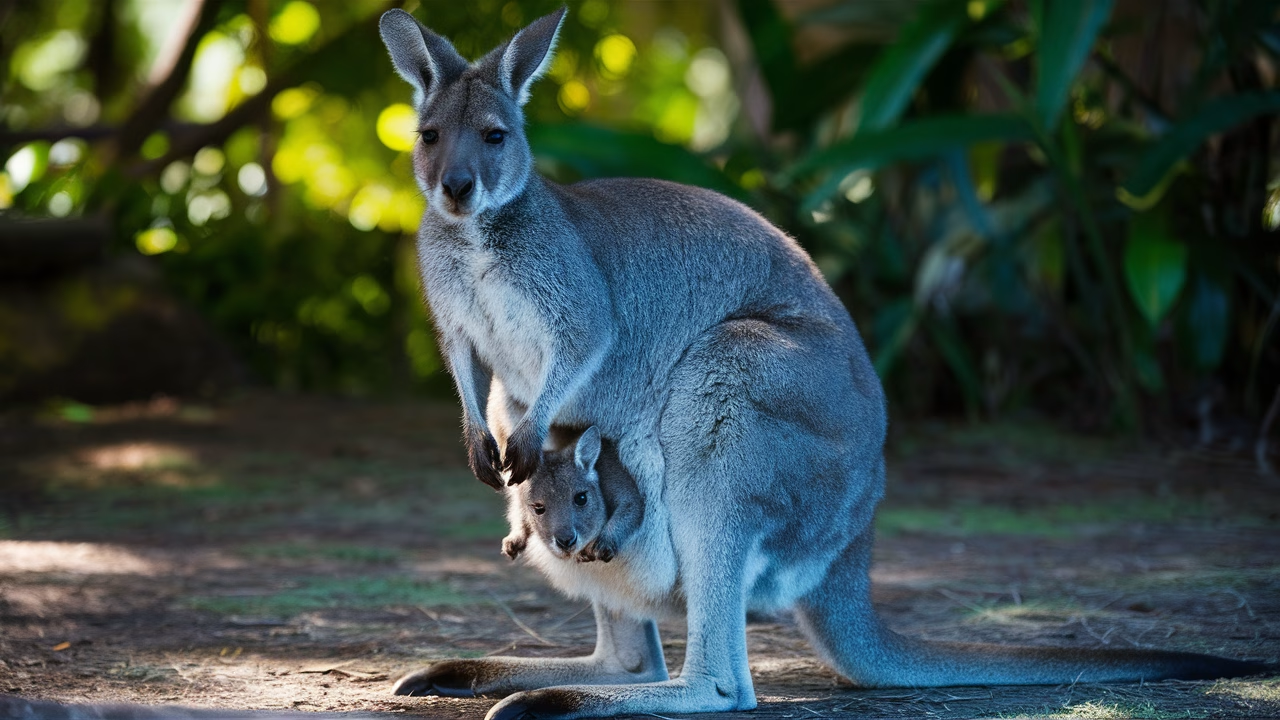How big is a newborn baby kangaroo, and how does it grow?
When we say a baby kangaroo size is like a jellybean, we’re not exaggerating. These incredible marsupials begin their lives at just about 2 centimeters long — that’s roughly the length of a grape jellybean! But the story gets even more fascinating as we follow their dramatic transformation inside their mother’s pouch.
TL;DR Summary
- Newborn Size: Baby kangaroos, or joeys, are born at a mere 2 cm long, weighing less than a gram.
- Developmental Journey: They crawl up to the pouch immediately after birth, where they develop for months.
- Food Source: Joeys exclusively feed on their mother’s milk during early stages.
- Pouch Life: The pouch acts like a nursery — warm, secure, and essential for survival.
- Rapid Growth: Joeys typically remain in the pouch until around 6–9 months, growing rapidly throughout.
Introduction: The Amazing Size of Baby Kangaroos
Ever imagined something the size of a jellybean becoming a creature that can leap over 25 feet in one bound? That’s the astonishing reality of kangaroo parenting and growth. If you’re an animal lover, biology student, or curious parent seeking to spark awe in your child, buckle up — because baby kangaroo development is truly one of nature’s greatest transformations.
In the wild Australian outback, where survival isn’t just about size but strategy, kangaroos have evolved a reproductive approach entirely unique among mammals. Unlike most species that give birth to relatively developed young, kangaroos deliver their babies at an astoundingly early stage of development — and that’s where the journey inside the pouch begins.
Physical Development: From Jellybean to Joey
Stage 1: Birth At 2cm – A Microscopic Marvel
At birth, a baby kangaroo, scientifically known as a “joey,” measures just about 2 centimeters — making the baby kangaroo size truly remarkable. We’re talking pink, blind, hairless, and fragile — weighing less than a gram. What’s truly remarkable is that, despite this vulnerability, the joey is already programmed with innate survival instincts. Within minutes of being born, it crawls — yes, crawls — up into its mother’s pouch using only its forelimbs. That journey would, relatively speaking, be like a newborn human climbing a skyscraper!
Stage 2: The Pouch Nursery
Once nestled safely inside the pouch, the joey latches onto one of the teats. This isn’t just any meal ticket — the teat swells in the baby’s mouth, effectively locking it in place. Here, in the warmth of the pouch, the joey continues to develop key organs, grow fur, open its eyes, and gradually gain strength over several months. Understanding how fast do kangaroos grow becomes clear by month 3, when it might be just big enough to peek its head out of the pouch and take in its first glimpse of the world beyond.
Stage 3: Poking Out & Testing Limbs
Between 6 and 8 months, the joey begins to experiment with its surroundings. Pouch exits become more frequent — like mini field trips. These little leaps of independence are critical moments as coordination strengthens through practice hopping, demonstrating fascinating kangaroo behavior patterns.
Stage 4: Emerging Joey
At 8 to 9 months, the joey is nearly ready to leave the pouch altogether, although it may still suckle for nourishment until around 12 months of age. The early days of permanent pouch exit are filled with exploration and mimicry as the young kangaroo learns the rhythms and routines of adult kangaroo behavior.
Behavioral Traits: Discovering the World Inside the Pouch
Now let’s peek inside this marsupial marvel — the kangaroo pouch — exploring kangaroo pouch facts that reveal the biological equivalent of a full-service nursery.
How Does the Pouch Work?
The pouch is more than a pocket; it’s a perfectly evolved habitat. Despite its elastic appearance, the inside is lined with soft skin and equipped to maintain optimal temperature and hygiene. These kangaroo pouch facts show that mothers reflexively clean the pouch and even produce different kinds of milk for joeys at different development stages — sometimes simultaneously for children of different ages!
What’s Life Like Inside?
Imagine living in a warm, dim bubble that rocks with your every movement. Sounds cozy, right? The joey’s pouch life is marked by lots of sleep, consistent nutrition, and the sound of the mother’s heartbeat. This secure environment shapes early kangaroo behavior — from how they bond to how they respond to the outside world once they emerge.
Diet and Nutrition: What Fuels a Growing Kangaroo
So, what do baby kangaroos eat? For months, their diet consists exclusively of highly nutritious marsupial milk, rich in fats and proteins. Notably, kangaroo mothers can produce different milk compositions from different teats based on joey developmental stage — one of the most fascinating kangaroo pouch facts.
Nutritional Timeline:
| Age (Months) | Primary Food Source |
|---|---|
| 0–3 | Pouch milk only |
| 3–6 | Pouch milk + peeking out |
| 6–8 | Milk + nibbling grass |
| 9–12 | Mostly grass + optional milk |
This specialized feeding ensures the joey gets exactly the nutrients it needs when it needs them. Understanding what do baby kangaroos eat reveals biology tailored to survival.
Fun Facts: Fascinating Insights into Kangaroo Parenthood
Kangaroo facts that surprise even seasoned zoologists
• Double Duty Moms: Female kangaroos can be pregnant with one joey in the pouch while another embryo remains paused in development — a phenomenon called embryonic diapause.
• Gender Savvy: Kangaroo mums may even influence whether the embryo becomes male or female based on environmental conditions — an incredible evolutionary trait!
• How fast do kangaroos grow? Very! From a 1-gram birth weight to over 10kg (~22 lbs) in under a year — that’s equivalent to a human baby becoming the size of a 10-year-old in the same timeframe.
• Pouch Hygiene: Kangaroo mothers will use their tongues to clean inside the pouch regularly. Cleanliness is truly next to kangaroo-iness.
Cost Guide: Comparing Kangaroo Growth with Other Marsupials
| Species | Birth Size | Pouch Duration | Adult Size |
|---|---|---|---|
| Kangaroo | 2 cm | 6–9 months | Up to 90 kg |
| Koala | 2 cm | 6 months | 14 kg average |
| Wombat | 2 cm | 5 months | 20–35 kg |
Final Thoughts
Nature never ceases to amaze us, and the majestic transformation of a baby kangaroo — from a nearly invisible newborn to a bounding, powerful adult — exemplifies the miracles that marsupials offer. Understanding baby kangaroo size isn’t just a fun fact — it’s a gateway into learning about how life finds ingenious pathways to thrive, even in the toughest of landscapes. Whether you’re marveling at marsupials or exploring biology with your kids, kangaroos are a perfect place to start. Their journey from jellybean-sized joeys is nothing short of extraordinary.
Frequently Asked Questions (FAQs)
- How big is a newborn kangaroo?
A newborn kangaroo is about 2 cm long and weighs less than 1 gram — comparable to a jellybean in size. - How fast do kangaroos grow?
They grow rapidly, maturing from 1 gram to over 10 kilograms in under a year! - Do baby kangaroos stay in the pouch all the time?
Yes, they live in the mother’s pouch for about 6 to 9 months before venturing out. - What do baby kangaroos eat?
They feed on their mother’s milk until about 9 to 12 months of age. - Can kangaroo mothers have more than one joey at a time?
Yes! One can be in the pouch while another is suspended in early development through embryonic diapause. - Are all marsupials born this small?
Yes, marsupials give birth to very underdeveloped embryos that complete development in the pouch. - Why do kangaroos hop?
It’s an energy-efficient way of covering long distances in the arid Australian landscape.





